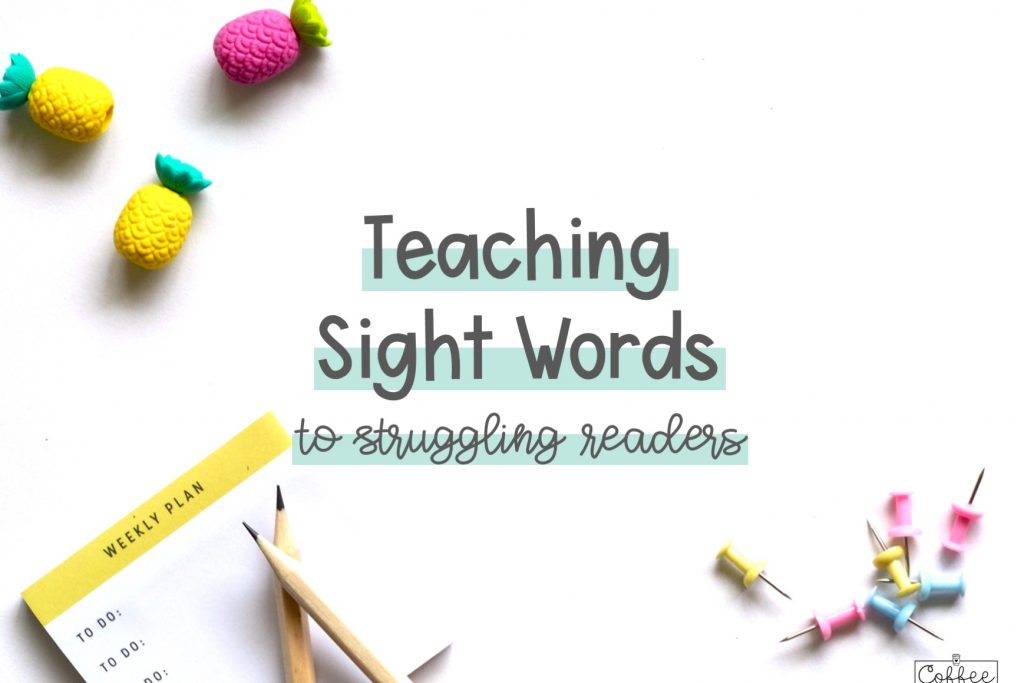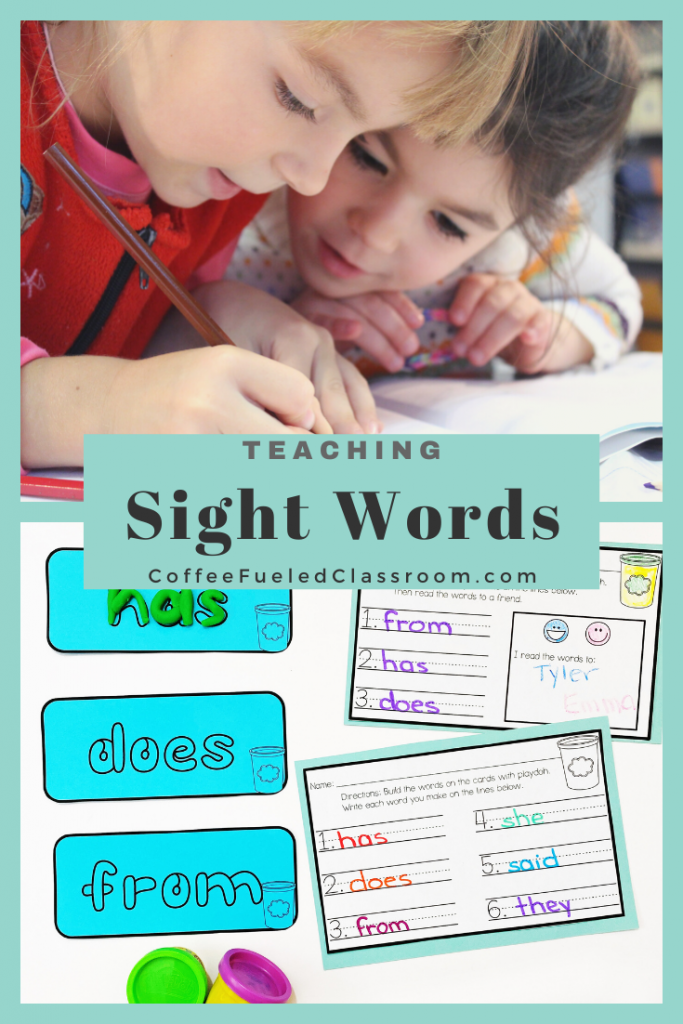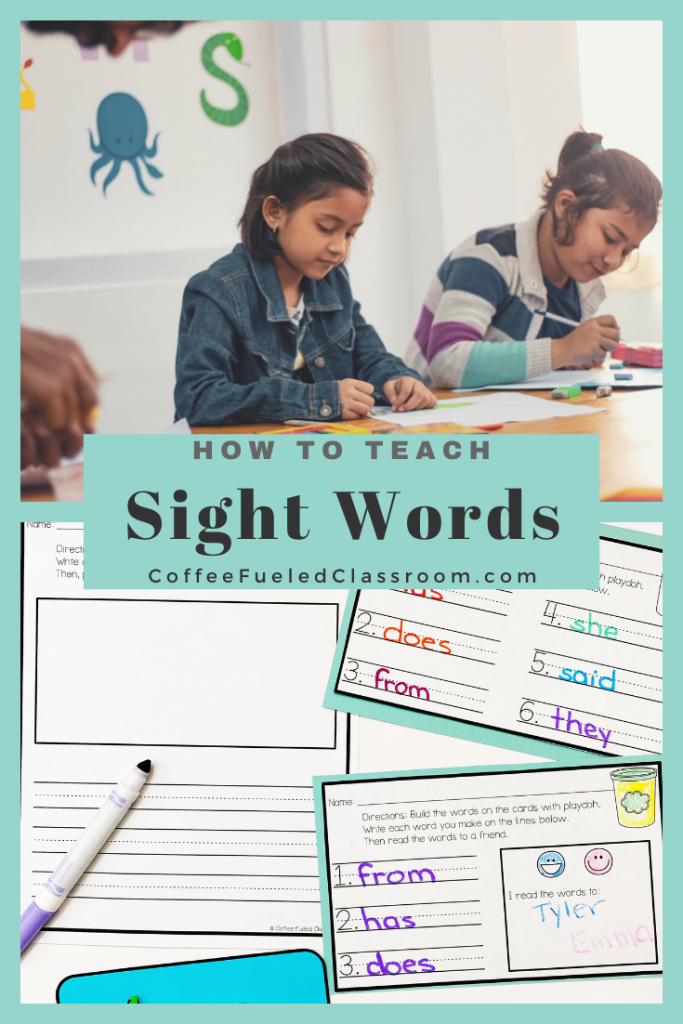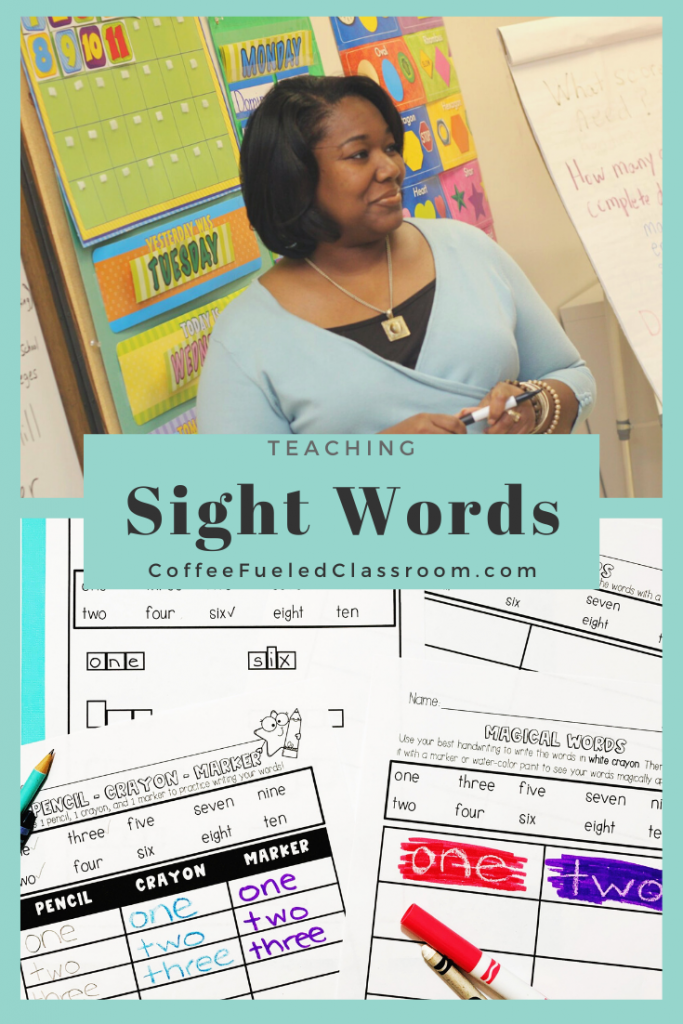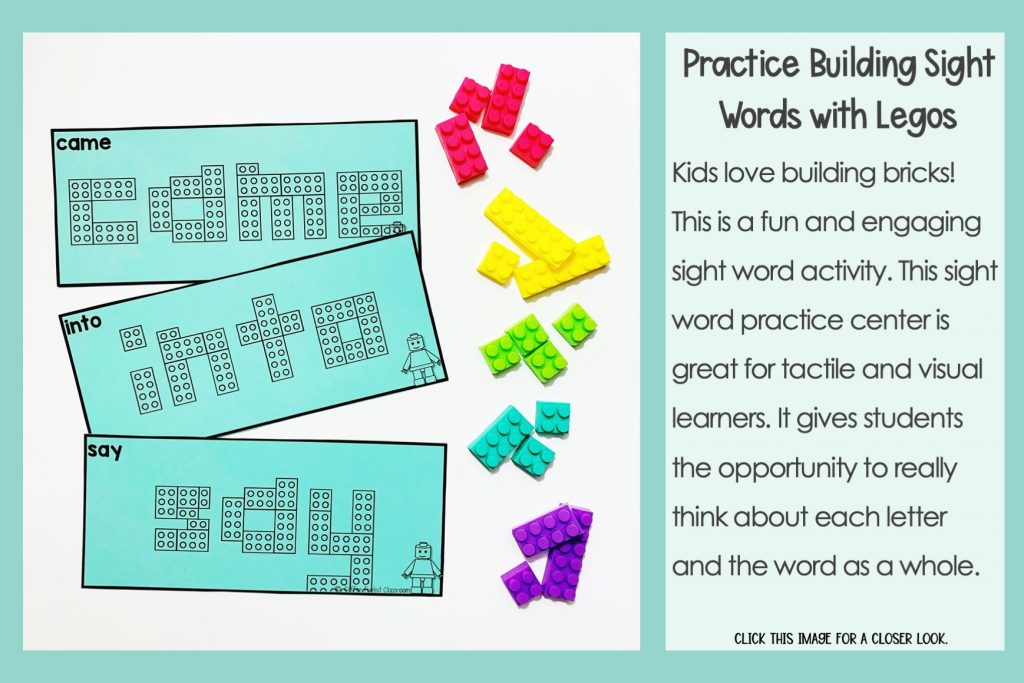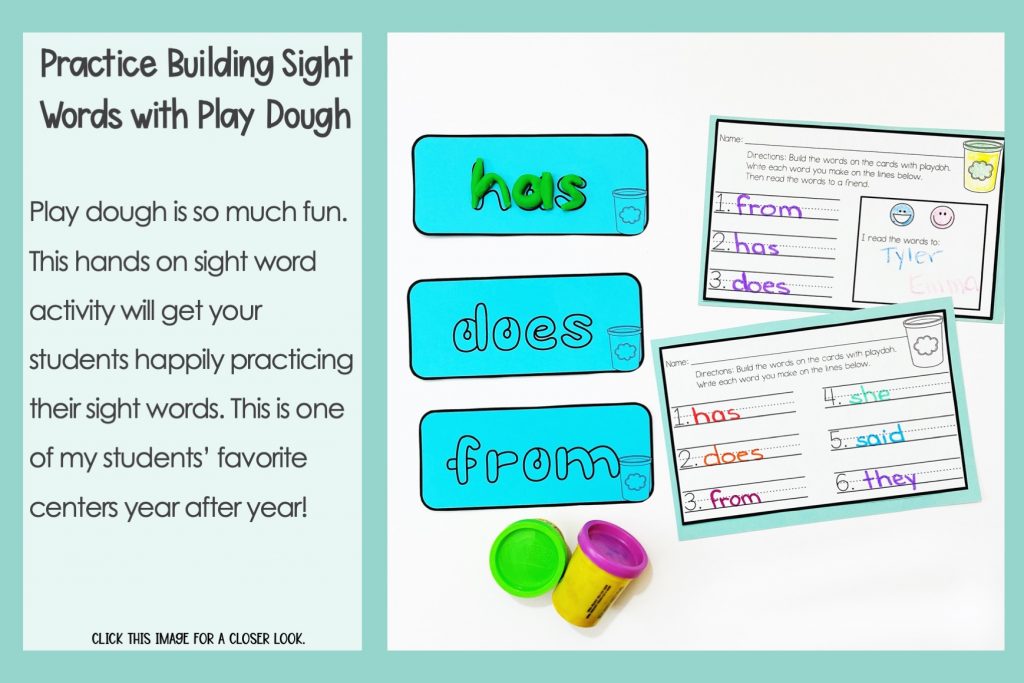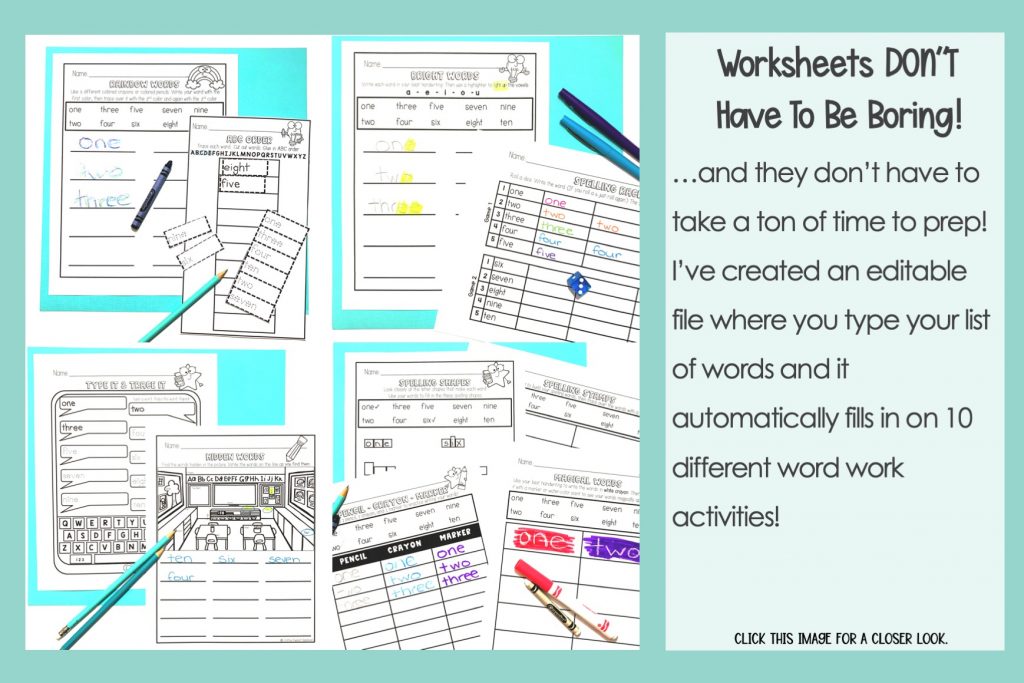Do you have students struggling with reading fluency? Teaching sight words is an important part of reading instruction. Teaching sight words to struggling readers is especially crucial to help build fluency and comprehension. You can have fun teaching sight words to your students! Read on to learn more about strategies for teaching sight words.
What Are Sight Words? Why are they so important?
First things first, what are sight words? Sight words are also called high-frequency words or trick words. These are all words that do not follow conventional phonetic rules. Sight words are words students need to know quickly by sight because they are difficult to decode. High-frequency words are the most common words that appear in texts for early readers. Approximately 50 – 75% of all words used in books are high-frequency words. Sight word fluency is an important skill to have in order for children to read smoothly and automatically. This is why teaching sight words to struggling readers, (or any early reader) is so important.
Effective Strategies for Teaching Sight Words
Teaching sight words to struggling readers and to all students in your classroom starts with you! The first step is explicit instruction. Giving direct instruction is one of the most effective strategies for teaching sight words. Whether you are using sight-words from your district’s curriculum, from one of the popular sight word lists, or working on sight words based on students’ gaps and needs, explicit instruction is key. But don’t worry you can give direct instruction while teaching sight words in a fun way.
What does explicit sight word instruction look like?
- Introduce the word in isolation
- Use the I do, we do, you do method to say the word
- Spell the sight word out loud (again I do, we do , you do)
- Talk about the letters and spelling of the word, and explain why it is a trick word. For example: “s-a-i-d spells said, this is a sight word because we know that ai usually makes the long a sound like in paid, or maid. But in the word said it sounds like a short e. This is why it’s a sight word and we just have to remember, in a snap, what it looks like so we can read it quickly. Let’s spell it again: s-a-i-d spells said.”
- Next, have students use their finger to trace the sight word on their desk or floor as they spell it out loud (do this 2 times).
- Then, ask the students to extend the arm that they write without straight in front of them, use two fingers and write the trick word in the sky. Again spell it out loud together, and repeat 2 times.
- To finish, invite students to close their eyes, picture the sight word, and write in small with one finger in the air or on their desk.
It is important to remember that teaching sight words to struggling readers means that you may need to pull mini-groups and re-teach. Make a small group based on your students’ needs and give direct instruction again. You can teach sight words again by meeting with students for as little as 5 minutes. In this sight word strategy group do a quick review and give explicit sight word instruction on sight words you have introduced and previously taught but students have not mastered.
Reinforcing Sight Words You’ve Taught
Since sight words are difficult to decode children need practice, practice, and more practice! Provide many opportunities for your students to read and spell sight words in order to build fluency. Here are some examples of sight word (word work) opportunities I build into my daily classroom routines.
If you need ideas for a week long unit of study check out Shark Week in the classroom.
